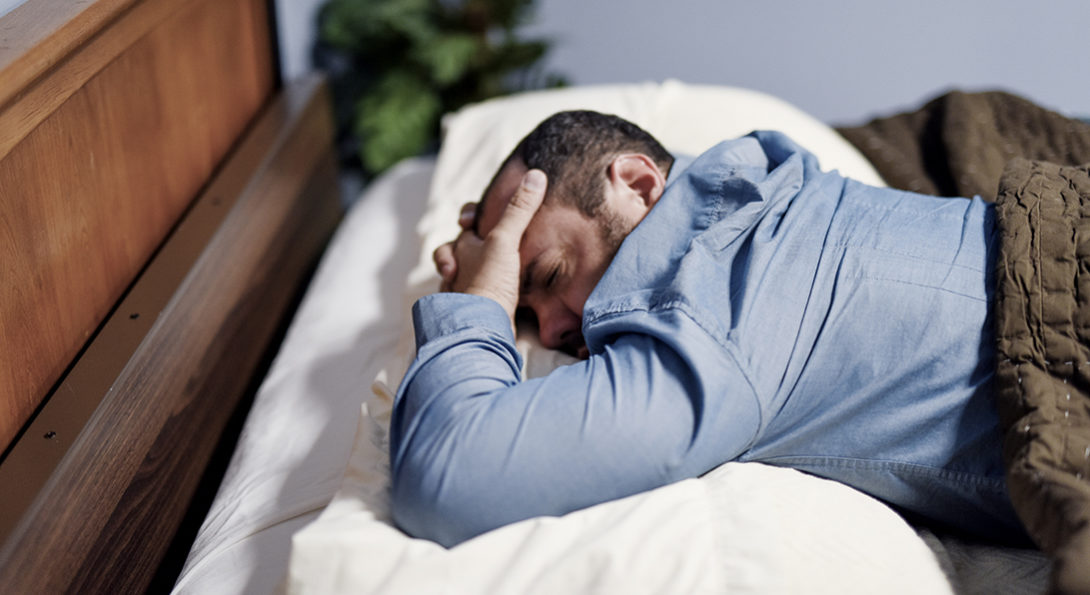Laboratory for Sleep Neurobiology

Focused on basic sleep and brain research, with ongoing studies that examine sleep-disordered breathing, circadian rhythm disorders, cognitive and cardiovascular consequences of disordered sleep, and narcolepsy
Lab Faculty Heading link
Michael W. Calik
Phone:
Email:
Anne M. Fink
Email:
Students Heading link

Katherine Durham Maki, MS, APRN
Maki’s research focuses on the cardiovascular consequences of disrupted sleep (e.g., shift work, sleep fragmentation). She is interested in studying the mediating effect of the microbiome on cardiovascular pathophysiology, and the role of circadian misalignment in this model. As a cardiac electrophysiology nurse practitioner at the Jesse Brown VA Medical Center, her goal is to translate this research into interventions that reduce cardiovascular morbidity in veterans.

Sara Mithani, BSN
During her undergraduate studies, Mithani developed expertise in the application of high density electroencephalography to explore sleep function and neurophysiology. Currently she is studying optogenetic manipulations of cholinergic neurons in the pons to define sleep and cardiovascular function. Mithani is interested in identifying physiologic and genetic alterations following traumatic brain injury with a focus on sleep abnormalities and the development of neurodegenerative diseases.
Inquire about job openings in the lab
options Heading link
Recent Publications Heading link
Calik MW, Carley DW. Effects of Cannabinoid Agonists and Antagonists on Sleep and Breathing in Sprague-Dawley Rats. Sleep. 2017 Sep 1;40(9).
Calik MW, Carley DW. Cannabinoid type 1 and type 2 receptor antagonists prevent attenuation of serotonin-induced reflex apneas by dronabinol in Sprague-Dawley rats. PLOS ONE. 2014. 28;9(10):e111412.
Calik MW, Carley DW. Intracerebroventricular injections of dronabinol, a cannabinoid receptor agonist, does not attenuate serotonin-induced apnea in Sprague-Dawley rats. J Negat Results Biomed. 2016.
Calik MW. Treatments for Obstructive Sleep Apnea. J Clin Outcomes Manag. 2016 Apr;23(4):181-192.
Calik MW. Update on the treatment of narcolepsy: Clinical efficacy of pitolisant. Nat Sci Sleep. 2017. 26;9:127-133.
Calik MW, Radulovacki M, Carley DW. Intranodose ganglion injections of dronabinol attenuate serotonin-induced apnea in Sprague-Dawley rat. Respir Physiol Neurobiol. 2014. 1;190:20-4
Calik MW, Radulovacki M, Carley DW. A method of nodose ganglia injection in Sprague-Dawley rat. J Vis Exp. 2014. (93):e52233.
Calik MW, Shankarappa SA, Langert KA, Stubbs EB Jr. Forced Exercise Preconditioning Attenuates Experimental Autoimmune Neuritis by Altering Th1 Lymphocyte Composition and Egress. ASN Neuro. 2015 Jul-Aug;7(4).
Fink AM, Bronas UG, Calik MW. Autonomic regulation during sleep and wakefulness: A review with implications for defining the pathophysiology of neurological disorders. Clinical Autonomic Research, 2018;28(6), 509-518.
Fink AM, Dean C. Quantifying acute changes in renal sympathetic nerve activity in response to central nervous system manipulations. Journal of Visualized Experiments, 2018;(139):e58205.
Fink AM, Dean C, Piano MR, Carley DW. The pedunculopontine tegmentum controls renal sympathetic nerve activity and cardiorespiratory activities in Nembutal-anesthetized rats. PLOS ONE. 2017. 12(11):e0187956.
Fink AM, Topchiy I, Ragozzino M, Amodeo D, Waxman JA, Radulovacki M, Carley DW. Brown Norway and Zucker lean rats demonstrate circadian variation in ventilation and sleep apnea. Sleep. 2014; 37(4):715-21.
Mithani S, Fink AM. Mathematical models of sleep and circadian rhythms: A case for incorporating the two-process model into neuroscience nursing. Journal of Neuroscience Nursing, 2019;51(1):48-53.
Motamedi V, Kanefsky R, Mithani S, Gill J. Elevated tau and interleukin-6 concentrations in young adults with obstructive sleep apnea. Sleep Medicine, (In Press, 2017).
Topchiy I, Amodeo DA, Ragozzino ME, Waxman J, Radulovacki M, Carley DW. Acute exacerbation of sleep apnea by hyperoxia impairs cognitive flexibility in Brown-Norway rats. Sleep. 2014. 1;37(11):1851-61.
Topchiy I, Radulovacki M, Waxman J, Carley DW. Cardiorespiratory effects of intertrigeminal area stimulation in vagotomized rats. Brain Res. 2009. 23;1250:120-9.
Topchiy I, Waxman J, Radulovacki M, Carley DW. Functional topography of respiratory, cardiovascular and pontine-wave responses to glutamate microstimulation of the pedunculopontine tegmentum of the rat. Respir Physiol Neurobiol. 2010. 31;173(1):64-70.
Topchiy I, Radulovacki M, Waxman J, Carley DW. Impact of the vagal feedback on cardiorespiratory coupling in anesthetized rats. Respir Physiol Neurobiol. 2011. 15;175(3):375-82.
Weaver TE, Calik MW, Farabi SS, Fink AM, Galang-Boquiren MT, Kapella MC, Prasad B, Carley DW. Innovative treatments for adults with obstructive sleep apnea. Nat Sci Sleep. 2014. 18;6:137-47.